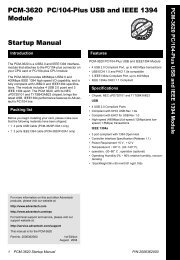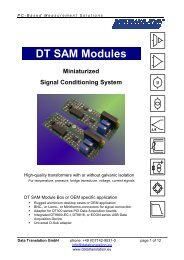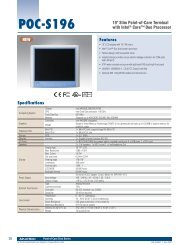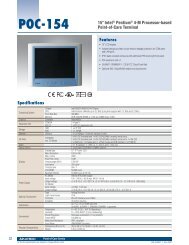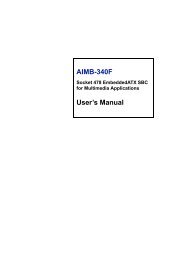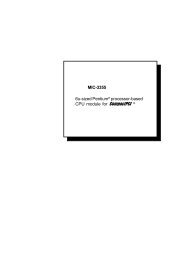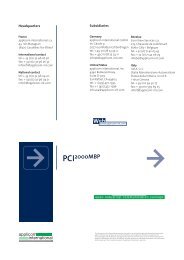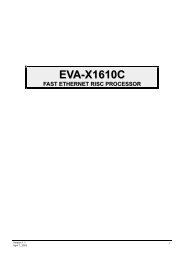1747-6.22, Backup Scanner User Manual
1747-6.22, Backup Scanner User Manual
1747-6.22, Backup Scanner User Manual
Create successful ePaper yourself
Turn your PDF publications into a flip-book with our unique Google optimized e-Paper software.
Switchover Considerations 8-159<br />
Divergence The synchronization of program execution in both processors limits<br />
divergence between the two systems by ensuring that the resulting<br />
output data in both processors is always identical.<br />
Because the program scans of the processors are not synchronized, it<br />
is possible that the two separate systems read the same input at<br />
different times. Eventually, different input values are read, thus<br />
different decisions are made and the internal states of the two systems<br />
diverge. If the two systems diverge, the secondary system generates a<br />
“bump” when it takes control over the process.The “bump” time is a<br />
function of how fast the inputs of the machine or the process are<br />
changing, as well the amount of data to send between the primary and<br />
secondary units.<br />
One possible method to avoid or reduce the bump is the “loosely<br />
synchronized backup” approach. This method requires special user<br />
programming techniques. With this approach, primary and the<br />
secondary SLC 5/0x execute the same program and are synchronized<br />
at a waiting point once per program scan.<br />
To limit divergence, we recommend that the primary and secondary<br />
processors execute the same programs.<br />
Forcing I/O <strong>Backup</strong> communication functions provided by the SLC 500 backup<br />
system do not transfer the force tables from the primary to the<br />
secondary processors. Therefore, if the SLC 500 backup system has<br />
forces set in the primary processor, the forces do not transfer to the<br />
secondary processor. For this situation, if a switchover occurs, the<br />
secondary processor becomes active, but the forces set in the original<br />
primary processor are not carried over.<br />
!<br />
ATTENTION: Set the forces in the secondary<br />
processor first. Then set the forces in the primary<br />
processor. Likewise, when removing forces, remove<br />
forces in the secondary processor before removing the<br />
forces in the primary processor. If a switchover occurs<br />
and forces were not set in the secondary processor first,<br />
the secondary processor does not recognize the forcedon<br />
input or output.<br />
Publication <strong>1747</strong>-<strong>6.22</strong>




